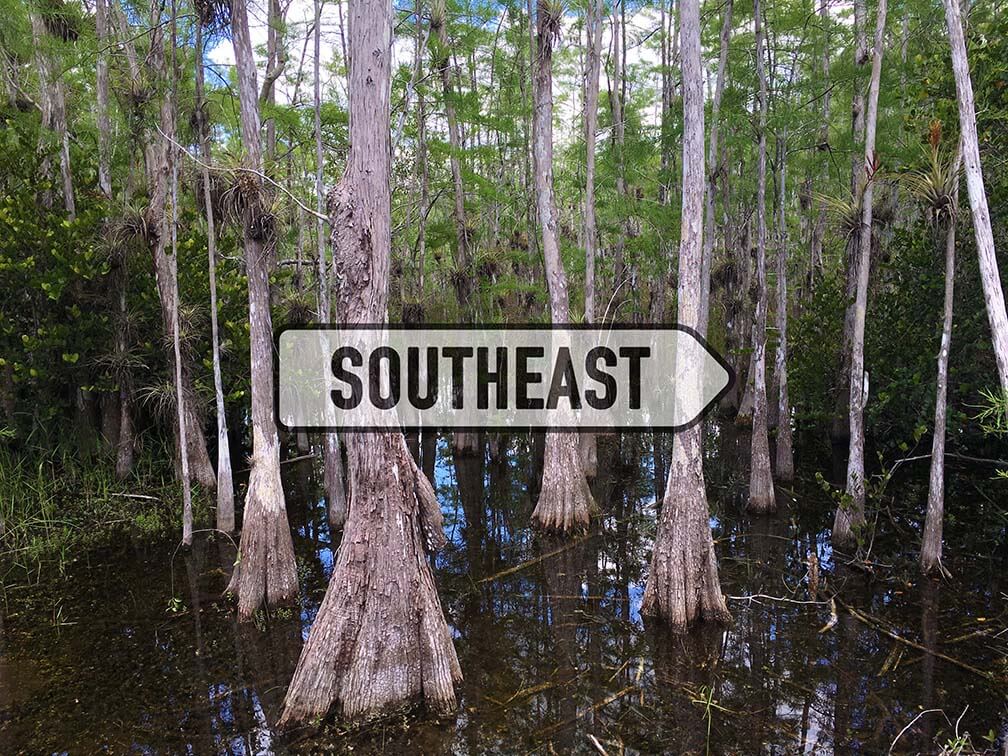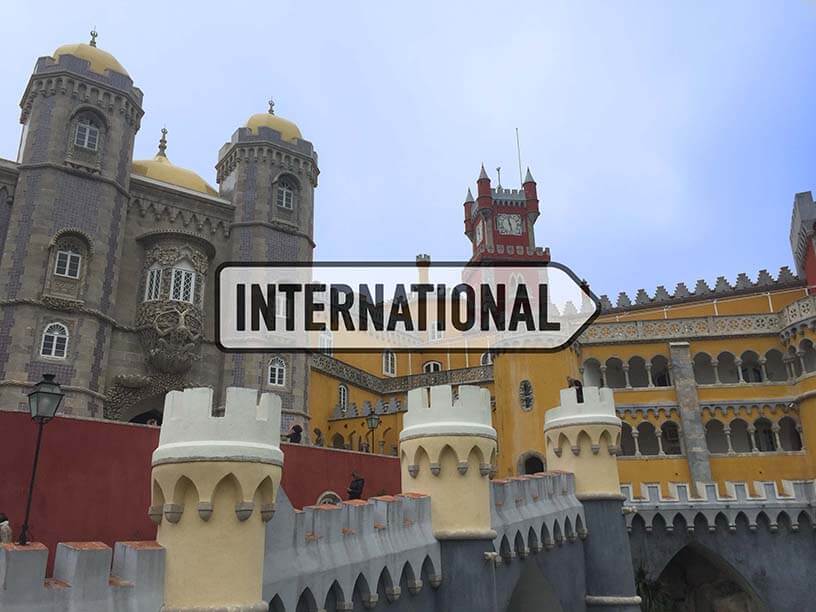Rocky Mountains:
Colorado, Idaho, Montana, Utah, and Wyoming Banner photo by Nick Cady.
Find the best activities, lodging, dining, tours, and hiking for Mesa Verde National Park. With this guide, there are also many fantastic side trips listed, with rugged trails, long stretches of highway, vast canyons, history and more within public lands in the Four Corners region.
Spotlights, Courtney Johnson
To make the most of your trip, use this guide to help you decide how to maximize your adventure to Yellowstone according to your interests.
Spotlights, Courtney Johnson
I balance my bicycle between my legs, front wheel turning heavily towards the woods. There are wild raspberries in my hand. Dad smiles. I reach for more; red ripe fruit hides under the wide leaves. Sunshine has reached through the aspen canopy of green. There is a glow around us like light in a cathedral of trees. Dad’s voice changes in the woods. We seem to stand on holy ground.
Gianna Soderstrom, Essays
In many parts of the country, the first signs of fall come with cooler temperatures and changing leaves. But for some areas, fall also brings the rut—a time when elk bulls fight to keep their bloodline alive.
Courtney Johnson, Essays
With five national parks and over forty state parks to visit in Utah, the Cedar Mesa region in the southeast part of the state—where President Obama designated Bears Ears monument—has been most renowned for being a point of controversy. I journeyed to Bears Ears to better acquaint myself with the landscape as an outdoor enthusiast, and to better understand why so many people have fought so hard to protect it, for so many decades. I also wanted to be able to make a case for this particular body of land that is based on my own experience.
Essays, Courtney Johnson
There's plenty to say about Glacier National Park, one of the most popular and scenic national parks — it is defined by glacial lakes, alpine valleys, vast green meadows and striking mountain tableaus. It is an idyll, with landscapes that might more often be found in a storybook. The vast park stretches over one million acres of northern Montana, and is home to multiple habitats and potential experiences for visitors. Based on our experiences with Glacier National Park thus far, we’ve synthesized our ideas, thoughts and suggestions to get you started in planning a Glacier adventure. Consider it a primer, as there is an abundance of information out there.
Spotlights, Parks & Points
Each of Utah’s five national parks reflects profound moments of geologic change, and each possesses a distinct landscape and history.
Spotlights, Parks & Points
When you approach the tallest sand dunes in North America at Great Sand Dunes National Park, you almost feel like you are on the set of Star Wars. From a distance, they appear much smaller than they are—the tallest point on the dunes is approximately 13,604 feet (4,146m) above sea level. When we got our closeup look from the visitor center in July, my four-year-old daughter Emma's mouth dropped open.
Spotlights, Courtney Johnson
“It’s autumn in Wyoming, Bighorn National Forest, 8,500 feet. The air is warming as I crunch gravel toward the sun, rising over the stunted high-country brush, flooding the narrow slot carved by the road between towering spruce and fir. I walk through pockets of scent: frost-shocked sage, then deep forest damp, then bright, baked stone.”
2017 Fall Essay Contest, 1st Place
Essays, Kristine Jepsen
The determination in the bison’s eyes is something I’ll never forget.
The mammal had a right front leg injury and was walking with a limp when my family saw him in the Lamar Valley of Yellowstone National Park this summer. The six-foot-tall, 2,000-pound bison looked after its orange reddish baby calf. I sat in awe as the light brown bison did everything in its power to move. The bison rocked its head back and forward just to walk. Its right front leg flailed with each step. Pain was shooting through its body, but the animal never stopped journeying forward.
Essays, Chris Umpierre
Driving along Highway 24 in south central Utah, to the west on the edge of the San Rafael Swell, you will find the Valley of the Goblins. Much evidence of Native American petroglyph and pictograph panels exists in the area, though cowboys searching for cattle are often credited with discovering Goblin Valley. In the late 1920’s, prospector and entrepreneur Arthur Chaffin bought the properties once owned by Cass Hite and The Cass Hite Ferry company. With no dirt road, finding a boat or swimming the horses was the only way to cross the Colorado River in the late 19th century. Chaffin was looking for ways to open Glen Canyon to the public, hoping to offer quicker routes between towns like Green River and Caineville, in Utah. Chaffin returned twenty some years later in 1949, to photograph what he referred to as a valley of mushrooms.
Spotlights, Courtney Johnson
“We had been trekking through clouds for nearly two days when the sky finally cleared and we found the Sperry Chalet. My boyfriend and I were spending some time in Glacier National Park, in the middle of a cross-country road trip that would have us living out of his car for four months. We had chosen our route—the popular Gunsight Pass—based on the three glacial lakes along the way, the pass promising to dip down to meet their frigid shores and then climb high to achieve comprehensive vistas of the dense mass of mountain, forest, and water that dominates that landscape. But when you’re trekking through clouds you can see little more than a thick, marshmallow fog and the immediate trail beneath your feet.”
Essays, Rachel Attias
“The handmade sign at the Lupine Meadows trailhead at Grand Teton National Park says an immature grizzly has been sighted in the vicinity, between Jenny and Surprise Lakes – the former named for the beloved wife of a nineteenth-century beaver trapper. Hikers are reminded to keep at least a football-field’s length away, since bears can run two to three times faster than humans, and can climb trees. ‘Be Bear Aware!’ is scrawled cheerfully across the bottom."
2016 Fall Essay Contest, 2nd Place
Essays, Heidi Czerwiec
We covered a lot of ground in all five of Utah's national parks and recorded some of the pathways and vistas that enlivened us during our visit; these virtual hikes provide some immediate context for specific trails you might be considering.
Spotlights, Parks & Points
“I’ve always been in love with the American West and with our national parks. I was fortunate to visit the Badlands, Yellowstone and Grand Teton National Parks for two weeks in July and August. I converted many of my images to black and white — I love this look for a couple reasons. First, it lets me highlight contrasts, shapes and lighting within the frame. Second, black and white images have a timeless look to them; they could have been captured yesterday, or in the early part of the twentieth century – so they age well.”
Photo Essays, Jim Jones
“The park was unlike anything I had ever seen before. My husband, daughter, and I were driving along Highway 26 West across central Idaho on our way to Twin Falls. We noticed a sign for Craters of the Moon National Monument and Preserve. We’d never heard of it. Well, it was on our way, we had time, and we enjoyed family adventures—so why not stop? As soon as we climbed out of our car, I was struck by a blast of scorching, dry air. At any moment I felt like flames were going to explode from my nostrils. It was a sunny, stifling, July afternoon.”
Essays, Suzanne Cottrell
A member of the 1871 Hayden Expedition, Thomas Moran’s field sketches provided Eastern lawmakers with their first color images of Yellowstone. If you’ve seen Moran’s work, you know that his paintings are as grand as the actual landscape — although not in precisely the same way. Moran’s brush reveals a wonderful eye for details, and a romantic’s disdain for fact. “My general scope is not realistic,” he declared. “All my tendencies are toward idealization.” This statement seems an apt description of my own attitude toward Yellowstone. I love everything I see there, but take occasional pains not to see every thing’
Essays, Peter W. Fong
Contributor Wendy LaCombe Johnson recently moved from New York City to Oregon, stopping for two days during her cross-country drive in Yellowstone National Park. Yellowstone, designated by Congress in 1872, was the first official national park, not only in the U.S., but in the world. Its existence, along with Yosemite, Kings Canyon, and Sequoia National Parks, influenced the 1916 formation of the National Parks Service. Her impressions offer a brief orientation to the park, especially if you just have a short time to visit.
Spotlights, Wendy LaCombe Johnson





























Where to Climb, Trek, Wander, Hike, Eat, and Relax along the Front Range of the Rockies in Southern Colorado.
Spotlights, Parks & Points